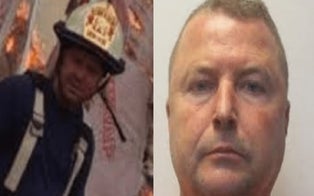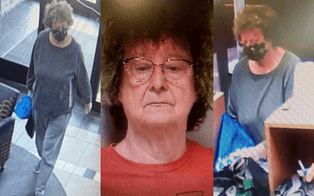A former Los Angeles cop posed an interesting theory that investigators may have missed key evidence.
Just after midnight on June 13, 1994, the bodies of O.J. Simpson’s ex-wife Nicole Brown Simpson and her friend, Ronald Goldman, were found outside her condo in Brentwood, California.
Both had multiple stab wounds and had reportedly been dead for hours before being discovered.
Her famous ex-husband quickly became a suspect sending the nation into a tailspin as the media coverage of the case made headlines everyday.
But Simpson was eventually acquitted in a moment that shocked America.
Could investigators have missed key evidence that would have led to his conviction? A former cop spoke to Inside Edition about his theory in 1995.
All Eyes on O.J.
On June 17, 1994, four days after the murders, Simpson failed to turn himself into police, which led authorities to release an all-points bulletin on the former football star in an effort to find him.
Hours later, motorists called police to say they had seen Simpson riding in a white Ford Bronco, which was being driven by his friend Al “A.C.” Cowlings. Police began following the slow-moving SUV in a chase broadcast on live TV.
The slow-speed chase eventually ended at Simpson’s home, where he was arrested and taken into custody. Three days later, he was arraigned and pleaded not guilty to both murders.
In what was dubbed “the trial of the century,” Simpson's trial began on Jan. 24, 1995.
Simpson hired an all-star defense team that included Johnnie Cochran, Robert Kardashian, F. Lee Bailey, Robert Shapiro, Alan Dershowitz, Gerald Uelmen and Carl E. Douglas, as well as Barry Scheck and Peter Neufeld, who specialized in DNA evidence.
Despite being branded the “Dream Team,” Dershowitz told Inside Edition in 2016, infighting was common among the big-wigs.
“It was a nightmare team,” he said. “The lawyers' egos were clashing. Everybody was trying to take credit. We won, not because we were good, but because the prosecution so was so bad.”
Missing Evidence
The defense went head to head with District Attorney Christopher Darden, Assistant D.A. William Hodgman and California state prosecutor Marcia Clark.
While it seemed to be a slam-dunk case for prosecutors, it would prove to be anything but. At issue in particular? The murder weapon was never found.
Weeks after the trial got underway, Inside Edition met with retired LAPD officer Jim King, whose beat was in Simpson’s neighborhood, not too far from where Brown Simpson and Goldman were killed.
King had previously dealt with Simpson during an alleged incident involving his first wife, Marguerite, in the mid-1970s.
“[Marguerite] indicated that OJ had punched her, had kicked her, had choked her, had forced her to the ground. He never denied touching Marguerite. To the contrary, he said he should have not touched her,” King claimed when Inside Edition spoke to him in 1995.
Both Simpson and his first wife have denied that the football star ever laid a finger on her.
King, who had no access to the evidence in the Simpson trial, also told Inside Edition that investigators were too focused on one specific route for allegedly escaping his ex-wife's apartment and that they ignored another route for the killer to have taken after the murders in the West Los Angeles area.
“If O.J. did commit the crime, he would want to get back to Rockingham as quietly and as surreptitiously as possible,” King said.
Using a map, King showed that Kenter Avenue and Homewood Avenue would have been his best routes back home.
The LAPD declined to comment to Inside Edition at the time on what specific routes they searched, but they did say they checked out all possibilities.
King believed he knew of areas the police didn’t look and speculated that it would have been possible for Simpson to have disposed of any incriminating evidence, including the murder weapon, before he reached his estate.
King also suggested that there could have been a pre-dug hole somewhere in the area where the evidence could have been hidden. A shovel was found inside Simpson’s Ford Bronco.
The Juice Goes Loose
In the defense’s closing argument on Sept. 27, 1995, Cochran created a mantra that would stick throughout the judicial system for years to come: “If it doesn’t fit, you must acquit.”
The phrase was used after Simpson tried on the gloves discovered by Det. Ron Fuhrman, believed to have been worn by the killer. But they didn't fit.
Cochran drove that point home in his closing statement.
After nine months, 120 witnesses, 45,000 pages of evidence and 11,000 exhibits, Simpson was acquitted.
However, in a civil lawsuit filed by both of the victims' families after the trial, Simpson was found responsible for Brown Simpson and Goldman's deaths and ordered to pay a total of $33.5 million in damages.
They've only received a small portion of that.
Simpson maintains he had nothing to do with their deaths.
RELATED STORIES





